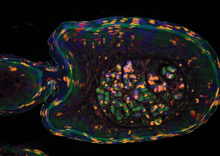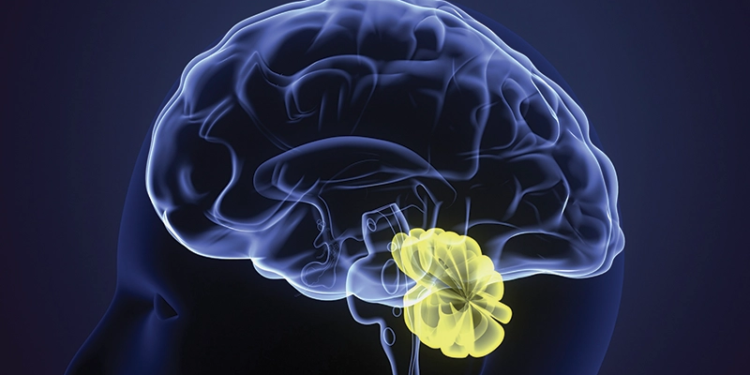Tissue-specific adult stem cells are responsible for the ability of mammals to re-grow the tips of fingers or toes lost to trauma or surgery, say researchers at the Stanford University (Stanford) School of Medicine, California. The finding discredits a popular theory that holds that previously specialized cells regress, or dedifferentiate, in response to injury to form a pluripotent repair structure called a blastema.
A German group headed by stem cell scientist Elly Tanaka, PhD, published similar results in salamanders in 2009, but until this study, it was unclear whether the findings would hold true in mammals.
“We’ve shown conclusively that what was thought to be a blastema is instead simply resident stem cells that are already committed to become specific tissue types,” said Irving Weissman, MD, a pathology professor and director of Stanford’s Institute for Stem Cell Biology and Regenerative Medicine. “The controversy about limb regeneration in mammals should be over.”
Weissman is the senior author of the study, published August 24 in Nature. Postdoctoral scholar Yuval Rinkevich, PhD, is the first author.
Mice and even some humans can re-grow finger or toe tips that have been lost in accidents. But, unlike salamanders or newts, their ability is limited to the repair of relatively minor damage. “While lower vertebrates can regenerate an entire limb within a matter of weeks, mice and humans have maintained only a vestige of this ability,” Rinkevich said. “The re-growth of amputated digit tips-a few millimeters in mice and up to the first joint in humans-is the only documented case of limb regeneration in mammals. We wanted to understand the basic mechanism of how this happens.”
Unlike salamanders, mice offered a genetically well-documented animal model with which to study limb regeneration. Specifically, Rinkevich, Weissman, and their colleagues have shown that damage to a digit tip is repaired by specialized adult stem cells that spend their lives quietly nestled in each tissue type. These cells spring into action at the first sign of damage, working independently yet side-by-side to regenerate bone, skin, tendon, vessels, and nerves; however, the division of labor among these stem cells is strict. Each is responsible solely for its own tissue type.

Limb regeneration is governed by the action of tissue-specific adult stem cells. Here, a mouse has been engineered to have cells that express only one of four possible colors: red, green, yellow or blue. As the tip of an amputated digit re-grows, strict separations between the contributions of individual cells are apparent as distinct bands of color. Photograph courtesy of Yuval Rinkevich/Stanford University School of Medicine.
In contrast, the blastema theory invokes a new pluripotent cell type formed out of urgency from previously specialized cells. This jack-of-all-trades cell discards its former role and instead jumps in to indiscriminately regenerate all the tissue types of the limb.
For this study, Rinkevich used genetics to label specific tissue types in the mice with distinctive fluorescent colors that are easily seen through a microscope. He then surgically removed a few millimeters-sized portion of one toe on each of the animals to mimic a naturally occurring amputation injury and waited for the tip to re-grow. The animals were anesthetized during the procedure and were given analgesics after the procedure to relieve pain.
After three months, Rinkevich and his colleagues examined the regenerated tissue.
“I began the experiment very eager to find something like a dedifferentiation or transdifferentiation phenomenon-that is, one tissue type becoming another,” Rinkevich said. “But this is clearly not the case.”
In addition to the blastema theory, there was one other possibility. Some researchers had suggested that stem cells circulating in the blood could contribute to this type of regeneration. To assess this possibility, Rinkevich connected the circulatory systems of two mice. One mouse was genetically bred to express a colorful marker in all of its cells; the other had its toe tip removed. They found that the labeled cells did not contribute to the regenerated tissue, showing that circulating stem cells were unlikely to be involved in the re-growth of the limb.
The researchers’ work does not discredit previous work by researchers at Stanford and elsewhere showing that it is possible to use transferred genes to coax adult, specialized cells (such as those found in the skin) to become other types of cells, such as neurons. That line of study is still important to the possible development of future therapies and the generation of cell lines for research, they say. However, the approach in the new study has some particular advantages.
“Here we are characterizing and learning about a naturally occurring regeneration phenomenon without adding other genes,” Rinkevich said. “We want to first understand how normal tissue regeneration works. Then we can try to exploit that knowledge to perhaps enhance the growth of digits or limbs in humans.”
The research was supported by the California Institute of Regenerative Medicine, the Smith Family Trust, the Oak Foundation, the Hagey Laboratory for Pediatric Regenerative Medicine, the Human Frontier Science Program, and the Machiah Foundation.
Editor’s note: This story was adapted from materials provided by Stanford University.




